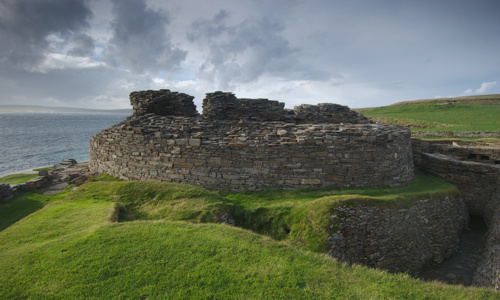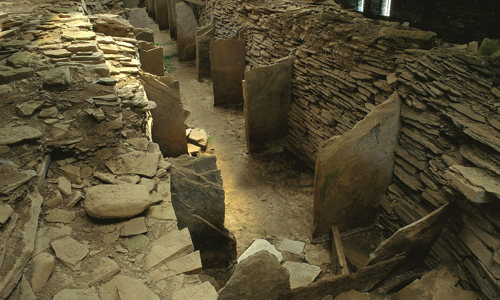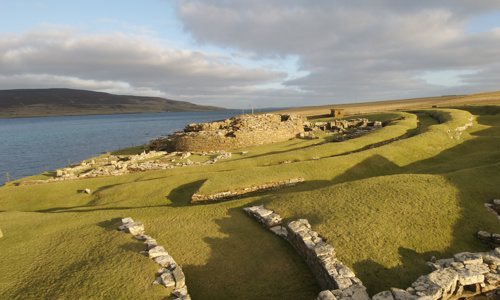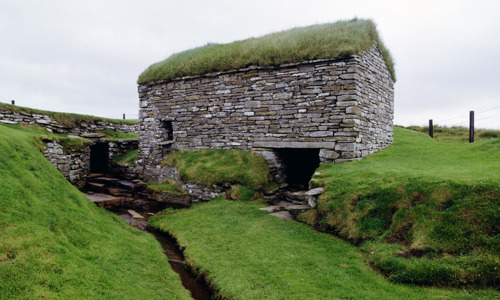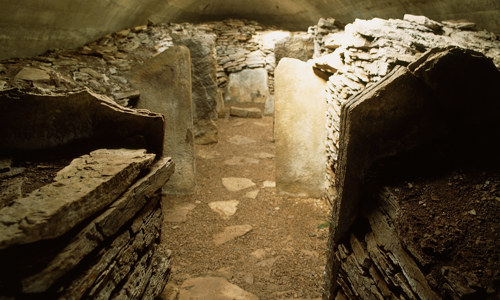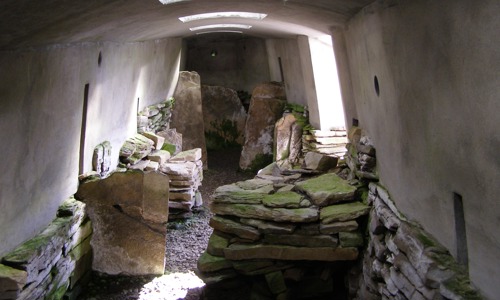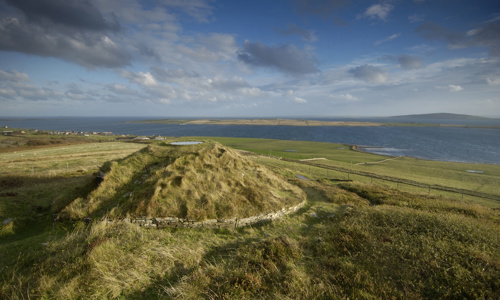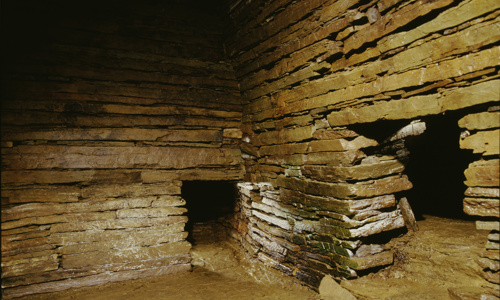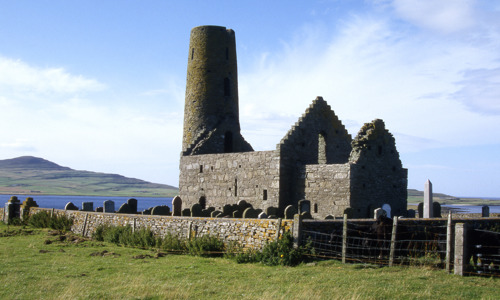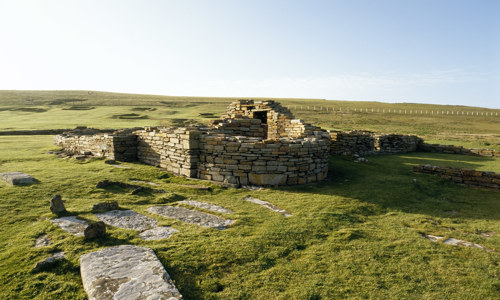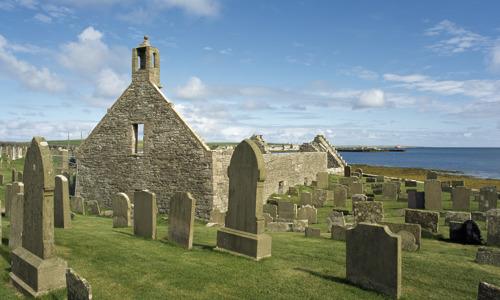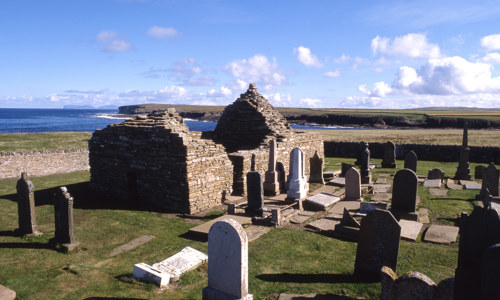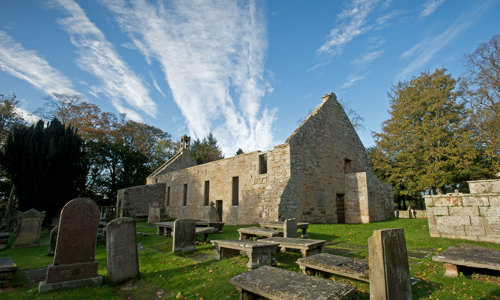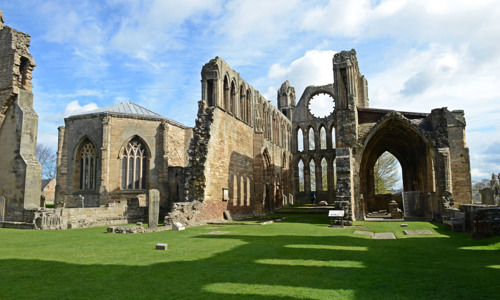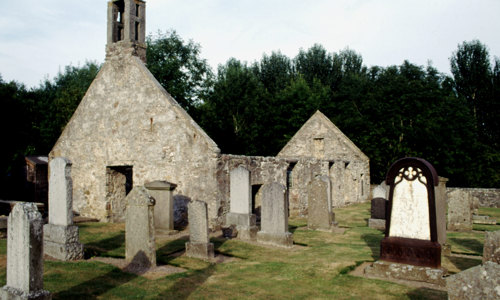History
The Holy Isle
Eynhallow’s name derives from the Old Norse Eyin-Helga, meaning ‘Holy Isle’. This may have been a monastery. There are no records referring to medieval monasteries in Orkney, although that doesn't mean that they didn't exist.
Eyin-Helga is mentioned in the Orkneyinga Saga under the year 1155. It is said that Olaf, foster son of the great Kolbein Hruga of Wyre was kidnapped here that year. It is possible that the youth had been sent to Eynhallow to be educated by the monks.
Kolbein Hruga’s fortified home Cubbie Roo’s Castle and the Earl’s Bu and Church are also both mentioned in the Orkneyinga saga.
The religious house had probably ceased to function by the Protestant Reformation in 1560, and the church was later adapted to form a two-storey dwelling. At the time of its abandonment four families lived here. The remains of two houses survive next to the church.
Unexpected discovery
The existence of the medieval church on Eynhallow came to light by chance in 1851. A disease, possibly typhoid, ravaged the island, and the four families who lived here had to be evacuated. When roofs of their cottages were dismantled, to make them uninhabitable, the structure of the ancient church was discovered.
Its structure is hard to determine, as it has been reworked into a residence and never properly studied. It includes:
- a porch at the west end
- a rectangular nave
- a square-sided chancel at the west end
Much of the ruins visible today belong to a house built in the 1500s. Traces of the original Norse kirk are visible in the porch walls, the gables of the nave and the lower section of the inner face of the chancel walls.


